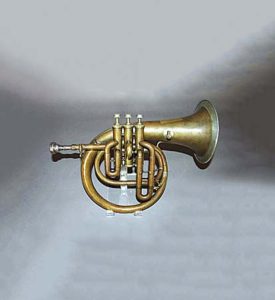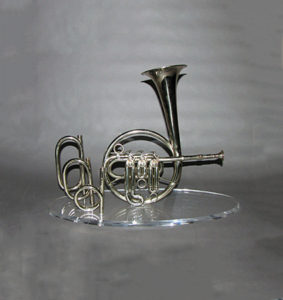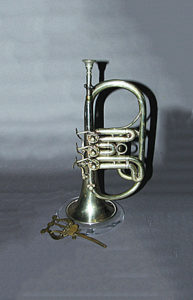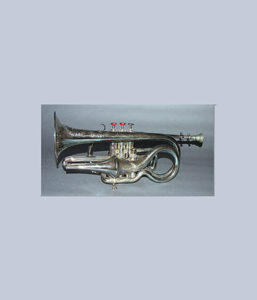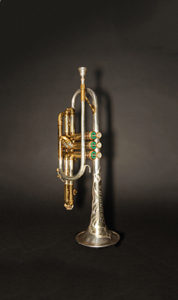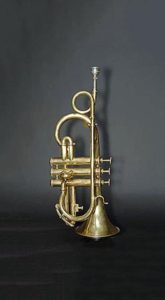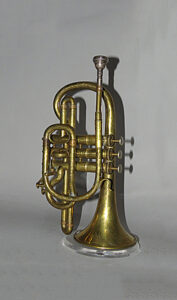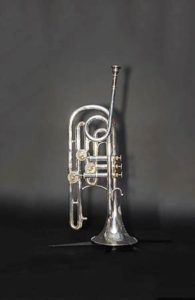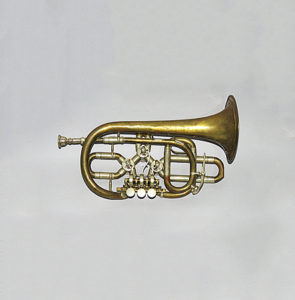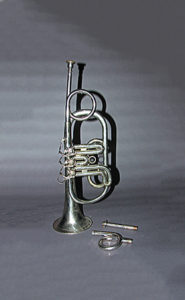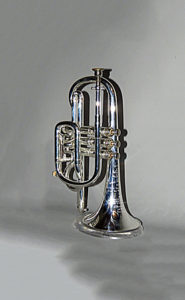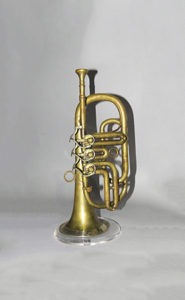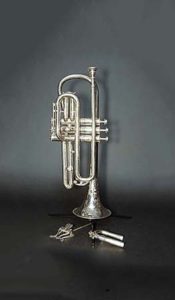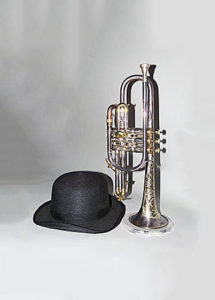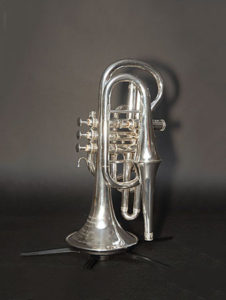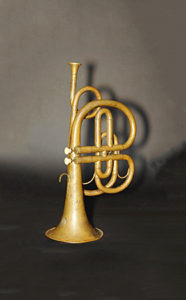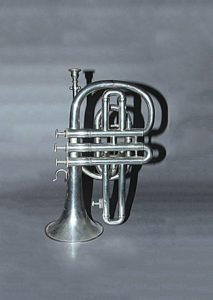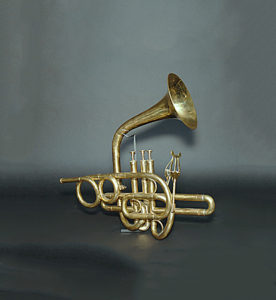Cornets / Cornopeans
The cornet is a brass instrument similar to the trumpet but distinguished from it by its conical bore, more compact shape, and mellower tone quality. The most common cornet is a transposing instrument in B♭, though there is also a soprano cornet in E♭ and cornets in A and C. The first cornet (cornopean or cornet à pistons)** was derived from the posthorn, by applying rotary valves to it in the 1820s in France. However, by the 1830s, Parisian makers were using piston valves. Two instrument makers jointly applied for a patent for the invented valves, however, it is likely that Blühmel (or Blümel) was the inventor, and Stölzel was the one who developed a practical instrument. The patent was granted for a period of ten years. Later, and most importantly, François Périnet received a patent in 1838 for an improved valve which is the basis of today’s modern brass instrument piston valves.
The **cornopean or cornet à pistons is the early form of the modern cornet. It is a lip vibrated aerophone with piston valves and interchangeable crooks that make it a fully chromatic instrument that can be pitched in a number of different keys. It originated in 1820s in France but had fallen out of usage by the early 20th century.

